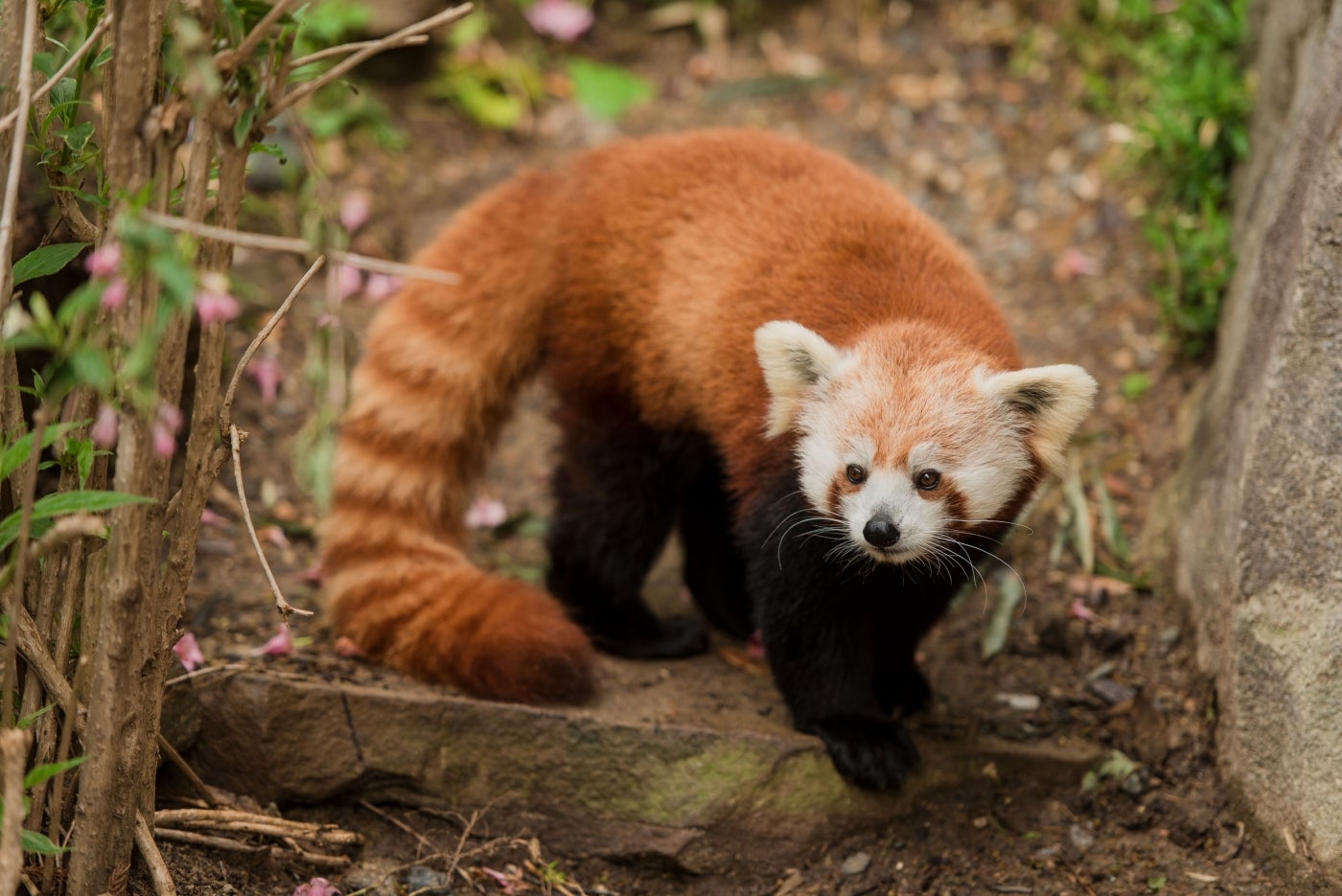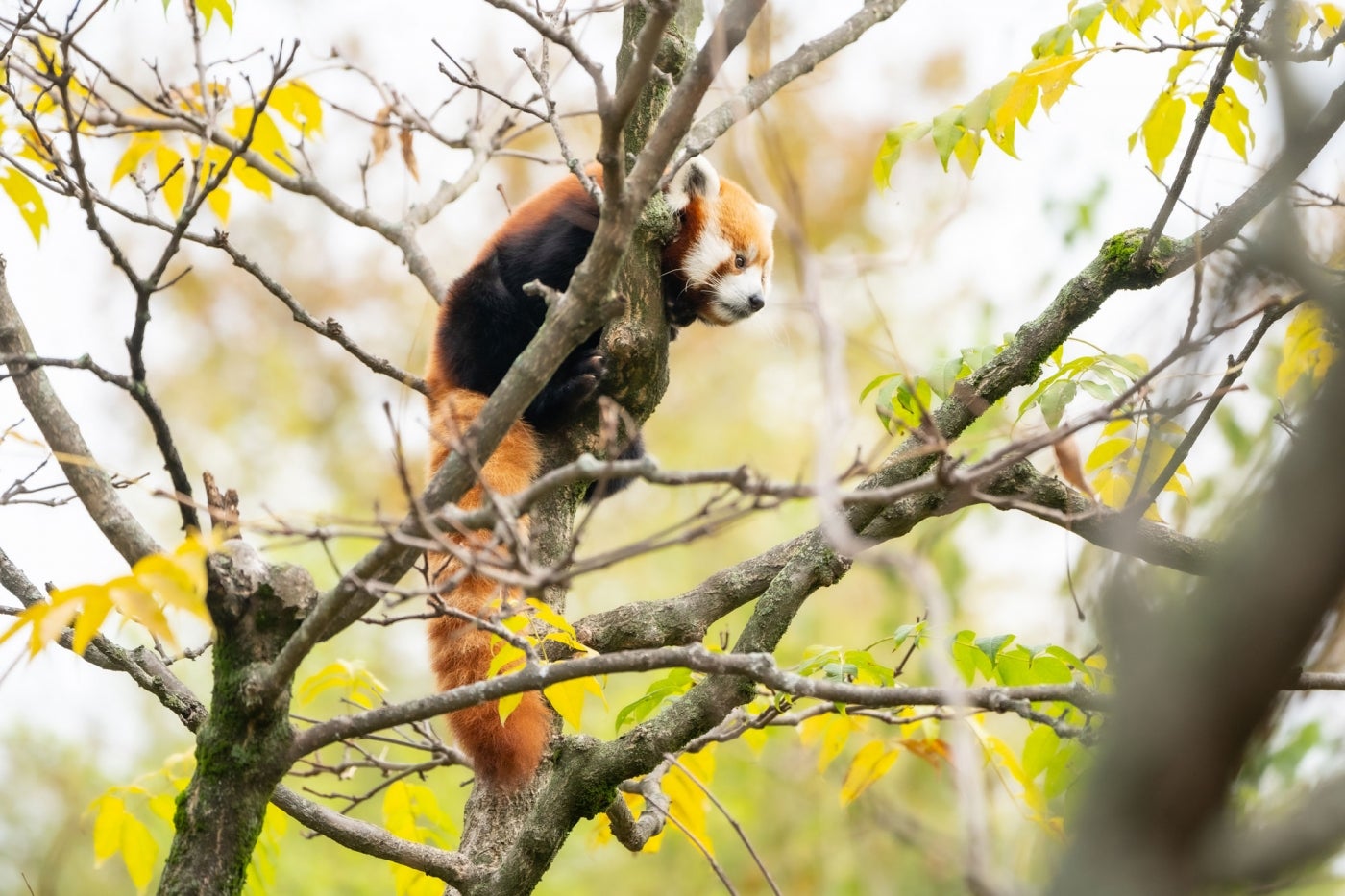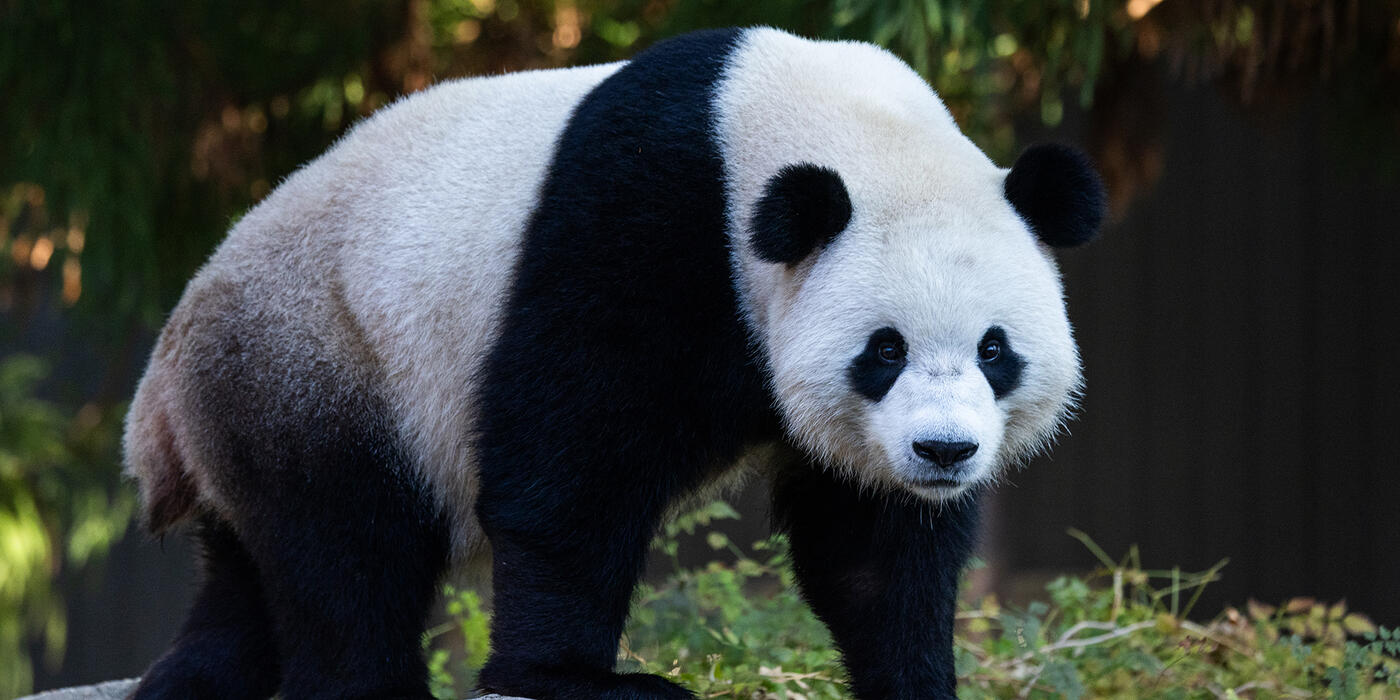Is a Red Panda a Bear? And More Red Panda Facts

Sept. 19 is International Red Panda Day! Whether you know them as red pandas, red bear-cats, firefoxes, first pandas, lesser pandas or simply “the other pandas,” get to know these ferociously furry animals with a few fun facts.

Is a red panda a real panda?
That depends on your definition of a real panda! The name panda is believed to come from the Nepali word "ponya," meaning "bamboo eater” or “bamboo footed." Despite sharing a common name, giant pandas and red pandas are not closely related. Red pandas are the only living members of their taxonomic family, Ailuridae, while giant pandas are in the bear family, Ursidae.
The red panda was first classified and given its scientific name, Ailurus fulgens, in 1825. Giant pandas were described much later and earned their "panda" name because of the similarities the two species shared, like eating bamboo. So, red pandas could be considered the original (or only) true pandas — even if giant pandas have grown more famous over the years.
Why is a red panda’s tail so fluffy?
It’s all about balance! A red panda’s long, woolly tail helps to keep it steady as it walks along rock ledges and tree branches. Red pandas don’t hibernate through the winter, so their thick fur and bushy tails also provide protection from the cold, wind and other harsh weather.

Is a red panda a bear?
No, nor are they raccoons! Scientists have long debated the red panda’s taxonomy. Red pandas were first described in 1825 as members of the raccoon family, because they have similar skulls, teeth and ringed tails. Later, DNA analysis suggested that red pandas might belong in the bear family.
However, later genetic research placed red pandas in their own family: Ailuridae. Studies of their evolutionary history show that red pandas are an ancient carnivore species and are probably most closely related to skunks, raccoons and weasels. Five million years ago, their ancestors roamed North America!
Where do red pandas live?
Red pandas live in high-altitude, temperate forests in the Himalayas and other tall mountains where bamboo grows. New genetic studies suggest that the originally recognized subspecies of red panda may actually be two distinct species: Ailurus fulgens fulgens and Ailurus fulgens styani (also known as Ailurus fulgens refulgens).
Ailurus fulgens fulgens lives predominantly in Nepal and can also be found in India and Bhutan. Ailurus fulgens styani is primarily found in China and Myanmar, and tends to be larger and deeper red in color.
Do red pandas like snow?
You bet. Red pandas love the snow — and snowy days are the best time to see active red pandas at the Zoo!

Do red pandas make noise?
Red pandas can squeal, twitter, “huff-quack,” hiss and grunt to communicate with each other. Young cubs will sometimes use a whistle or high-pitched bleat when in distress. However, red pandas rely on scent marking more than vocalizations to communicate. They can scent mark by urinating or rubbing the scent-producing glands at the base of their tails against a surface.
Red pandas look like they are doing a “wiggle” dance when they scent mark. The liquid left behind tells other pandas about their sex, age, fertility and more. They also have scent glands between their foot pads, which they use to mark their territory. These glands produce a colorless liquid that humans can’t smell.
When a red panda comes across a new scent mark, it tests the odor with its tongue. The underside of a red panda’s tongue has a cone-like structure to collect liquid and deliver it to a gland inside the mouth, where the scent is interpreted. The red panda is the only carnivore with this adaptation.
Watch male red panda, Jackie, check out female Asa’s scent. He then leaves behind his own.
How big do red pandas get?
Full-grown red pandas typically weigh between 8 and 17 pounds. That’s about the size of a house cat. From tip of the nose to tip of the tail, they usually range from 36 to 43 inches long.
Would a red panda make a good pet?
No way. If the red panda hybrids (fire ferrets) from the animated series “Avatar: The Legend of Korra” have you dreaming of a pet red panda, think again. Real-life red pandas (nicknamed “firefoxes”) are wild animals and should never be kept as pets.
They have sharp teeth and claws that can be dangerous, and scent glands that emit a musky liquid. They also require specialized diets and healthcare. Moreover, red pandas are endangered animals protected by law, so it is illegal to buy and sell them as pets.

What do red pandas eat?
Red pandas may have the digestive system of a carnivore, but they are practically vegetarians. About 95% of their diet is bamboo! They eat the nutritious leaf tips and tender shoots, but skip the culm (woody stem). They also forage for roots, grasses, fruits, insects and grubs. Red pandas may sometimes hunt birds and small mammals, too.
At the Smithsonian’s National Zoo and Conservation Biology Institute, red pandas eat leafeater biscuits, bamboo and bamboo shoots (when in season). As enrichment treats, they like to snack on apples, grapes, bananas, blueberries and other produce.
What is a group of red pandas called?
A group of red pandas can be called a pack, but they rarely encounter each other. Red pandas are solitary except during the breeding season when it’s not uncommon to see a male and female pair (or even a male and two females). Baby red pandas usually arrive in late spring to early summer (in the northern hemisphere) and stay with their mothers for about a year before heading out on their own.
In zoos, some red pandas live in pairs based on their individual personalities and the size of their exhibit.
Are red pandas good climbers?
Absolutely. Whether napping, sunbathing or fleeing predators, red pandas spend most of their time in trees and are skilled climbers. They can even climb down a tree trunk head-first — thanks to very flexible ankles and the positioning of the fibula and tibia bones in their legs. Sharp claws and fur-covered feet also help red pandas grip as they climb.

How many red pandas are left in the wild?
Red pandas are endangered, and researchers believe that their total population has declined by more than 50% over the last 20 years. Scientists estimate that there may only be 2,500 red pandas remaining in the wild today.
How can I help red pandas?
The best way to help red pandas is to educate yourself and others about these animals. Encourage your friends and family to support conservation efforts, and research ecotourism practices before traveling to an area where red pandas live.
At home, look for ways to shrink your carbon footprint. Reduce, reuse, repurpose and recycle goods to divert waste from landfills, and volunteer to clean up a local ecosystem. These types of activities help keep the air and water free from pollution, which supports species worldwide.
Related Species:



